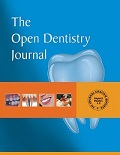Submission Tilte
Advances or Newer Trends in Endodontic and Dental Materials
Submission Abstract:
In the rapidly evolving field of dentistry, particularly in endodontics, staying updated with advances in dental materials is essential. This special issue highlights the latest developments and emerging trends in endodontic and dental materials, recognizing their significance in enhancing clinical outcomes and patient care.
Endodontic and dental materials play a pivotal role in dental practice, including restorative procedures, root canal treatments, and prosthodontics. Innovations in material science have led to the development of novel biomaterials with improved properties such as biocompatibility, durability, and esthetics. This issue explores recent advancements in materials used for pulp capping, obturation, post and core build-up, and dental implantology, among others.
Moreover, the issue delves into newer trends in material fabrication techniques, including additive manufacturing (3D printing), nanotechnology, and bioactive materials. These cutting-edge technologies offer unprecedented opportunities for customization, precision, and patient-specific treatment approaches. Furthermore, the issue examines the challenges and opportunities associated with the clinical translation and adoption of these advanced materials and technologies.
Key areas of interest encompass recent trends in endodontic and dental materials, novel biomaterials, fabrication techniques, clinical applications, challenges, and prospects. The issue aims to provide valuable insights into the evolving landscape of dental materials, facilitating informed decision-making and improving patient care outcomes.
While the advancements in endodontic and dental materials hold great promise for improving clinical outcomes and patient care, several challenges must be addressed to realize their full potential. One such challenge is the need for rigorous testing and evaluation of new materials to ensure their safety, efficacy, and long-term performance. Clinical trials and longitudinal studies are essential to assess novel materials' biocompatibility, mechanical properties, and clinical outcomes in diverse patient populations.
Moreover, adopting advanced materials and technologies in clinical practice requires specialized training and expertise among dental professionals. Continuing education programs and hands-on training courses are crucial in familiarizing clinicians with the latest materials, techniques, and equipment. Additionally, interdisciplinary collaboration between material scientists, engineers, and clinicians is essential to facilitate the translation of research findings into clinical applications.
Another challenge is the cost-effectiveness and accessibility of advanced dental materials, particularly in resource-limited settings or underserved communities. While these materials may offer superior performance and longevity, their higher initial cost and specialized equipment requirements may pose barriers to adoption. Strategies to reduce costs, improve affordability, and expand access to advanced materials are needed to ensure equitable delivery of dental care worldwide.
Overall, the endodontics and dental materials field is undergoing rapid transformation, driven by advancements in material science, technology, and clinical practice. Developing biocompatible, durable, and esthetic materials has revolutionized restorative dentistry, prosthodontics, and implantology, offering new opportunities for improving patient care outcomes. By embracing the latest trends and innovations in endodontic and dental materials, dental professionals can enhance the quality, safety, and effectiveness of dental treatments, ultimately benefiting patients and advancing the field of dentistry.




